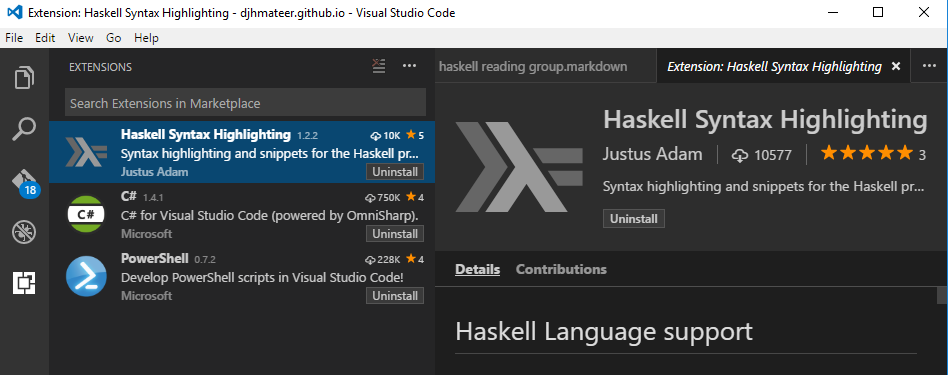

It seems harder to implement, but not that hard: miniKanren's default search strategy does this by interleaving exploration of each branch. Haskell types can be qualified by adding a (possibly empty) list of predicates, or class constraints, to restrict the ways in which type variables are instantiated 4 : data Qual t Pred :> t deriving Eq. I've not thought very hard about either the semantics or performance of this option. Assuming that none of these neat data structures existed and the only way to create a data structure was to use closures, this would be the implementation for a list (Python). Prolog uses this search strategy (so long as you avoid the “cut” operator, !).įinally, you could explore both branches “in parallel”. But it's easier to reason about it: you'll never “cut off” a branch from consideration. show (EOBoard f c r) intercalate 'n' 'EOBoard', 'Foundations ' ++ show f, 'Columns' ++ map show c ++ 'Reserves ' ++ show r ( map show c could be replaced by show x x <- c if you prefer.


Naturally, this is even more prone to combinatorial explosion. A list comprehension solves both problems, but Id use map instead. String ->, is a more elephantine beast: it never forgets! If you demand the list of all possible parses, every backtracking branch will eventually be visited. Parsec's try combinator does this.īut the original and famous formulation of monadic parsers as “a function from strings to lists of things and strings,” i.e. This is easy to implement in a hand-written recursive descent parser. I'm mostly considering what I call “shallow” backtracking, where if the first branch succeeds, you don't bother with the second branch indeed, you forget that you ever backtracked at all. I'm being a bit misleading here-not all backtracking parsers are created equal. So perhaps backtracking could blow up with those enabled. The following is an example of such an expression: x x x <- 1, 2, 7, 12, even x This list comprehension is the list of all those things of the form x x such that x is drawn from the list 1, 2, 7, 12 and x is. List comprehensions used to be called ZF-expressions. ↩Īs Alexis King pointed out to me, view patterns also let expressions nest inside of patterns (inside of expressions inside of patterns inside of.). List comprehensions are a convenient way of defining lists in Haskell. Despite this, GHC includes view-patterns in its datatype and grammar for expressions, with a post-processing check to ensure you can't use a view pattern where an expression is expected. These are given by the grammar: LISTCOMP ::= "* "]"ĬLAUSE ::= EXPR | PAT "" PAT, which isn't a valid expression. I have a toy problem that I like to test on anyone who thinks they've “solved” parsing: Haskell list comprehensions.


 0 kommentar(er)
0 kommentar(er)
